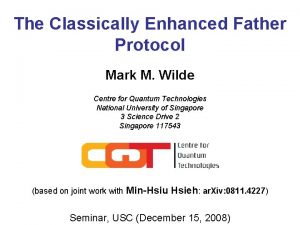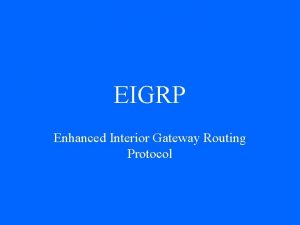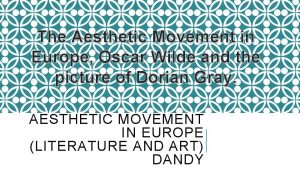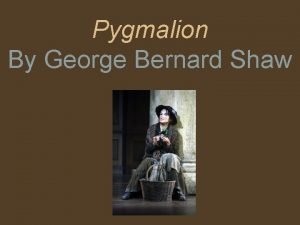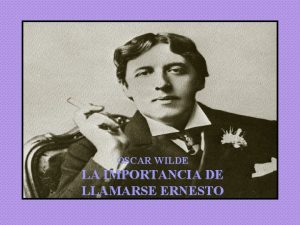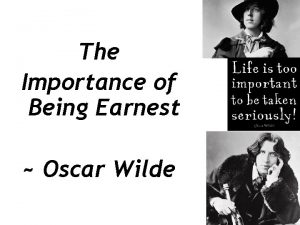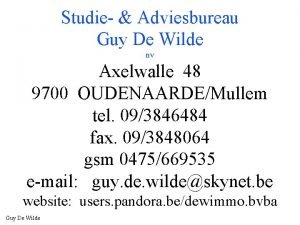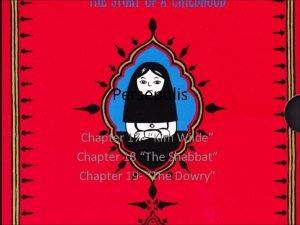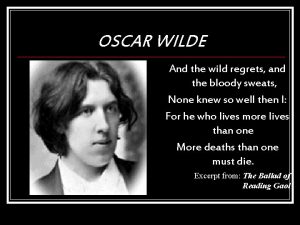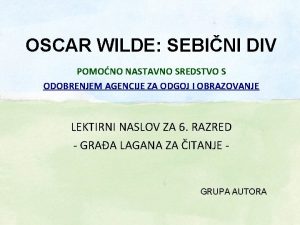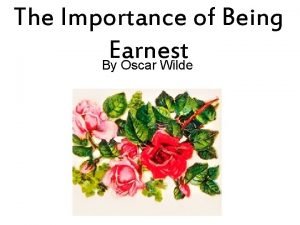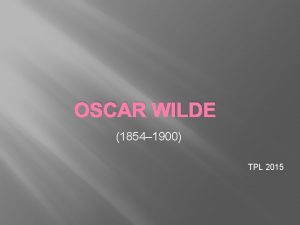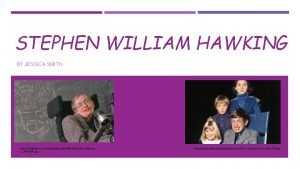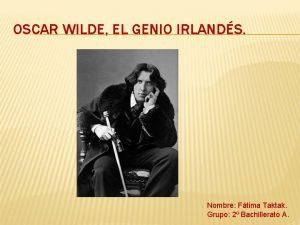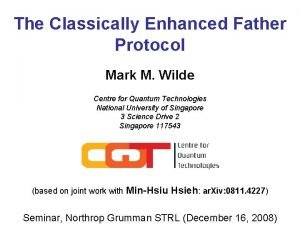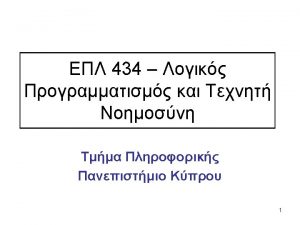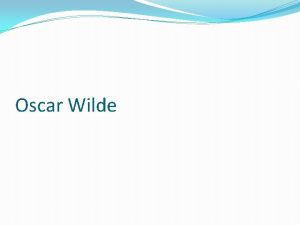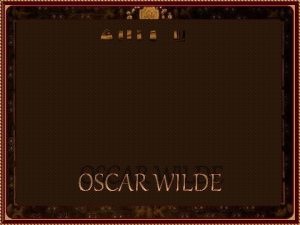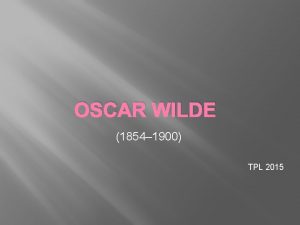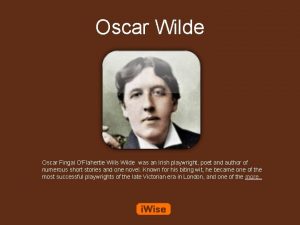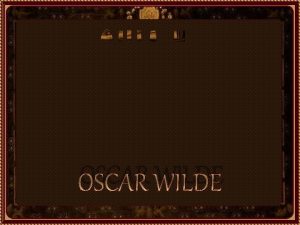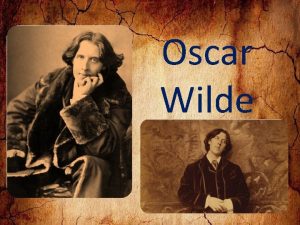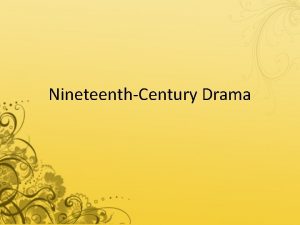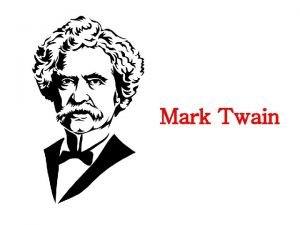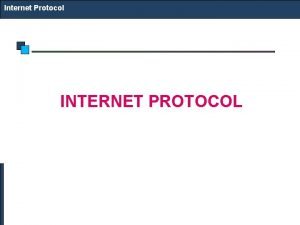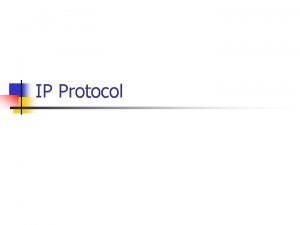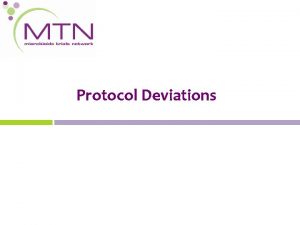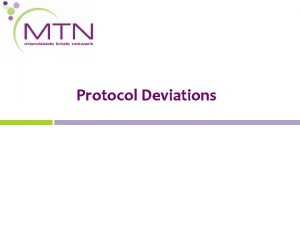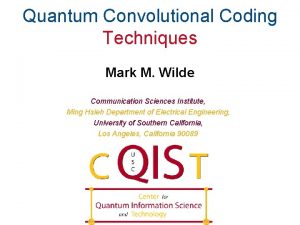The Classically Enhanced Father Protocol Mark M Wilde























- Slides: 23

The Classically Enhanced Father Protocol Mark M. Wilde Centre for Quantum Technologies National University of Singapore 3 Science Drive 2 Singapore 117543 (based on joint work with Min-Hsiu Hsieh: ar. Xiv: 0811. 4227) Seminar, USC (December 15, 2008)

Singapore Bird….

Outline Briefly review Quantum Shannon theory Entanglement-Assisted Quantum Channel Coding (Father Protocol) The Classically-Enhanced Father Protocol

Shannon Theory Claude Shannon established classical information theory Two fundamental theorems: 1. Noiseless source coding 2. Noisy channel coding Shannon theory gives optimal limits for transmission of bits (really just using the Law of Large Numbers) C. E. Shannon, Bell System Technical Journal, vol. 27, pp. 379 -423 and 623 -656, July and October, 1948.

Quantum Shannon Theory Quantum information has three fundamentally different resources: 1. Quantum bit (qubit) 2. Classical bit (cbit) 3. Entangled bit (ebit) Quantum Shannon theory—consume or generate these different resources with the help of 1. Noisy quantum channel (dynamic setting) 2. Shared noisy quantum state (static setting) ? ? I. Devetak, A. Harrow, A. Winter, IEEE Trans. Information Theory vol. 54, no. 10, pp. 4587 -4618, Oct 2008

Problem Description Given a large number of uses of a noisy quantum channel and some entanglement, How much quantum and classical information can we send? Hsieh and Wilde, ar. Xiv: 0811. 4227, November 2008.

Entanglement-Assisted Quantum Channel Coding Strategy Use the channel many times so that law of large numbers comes into play Relate the construction to secret-key-assisted private classical coding over a quantum channel (extension of Devetak’s ideas) Show to construct a secret-key-assisted private classical code and how to perform each of the steps coherently Devetak, Harrow, Winter, IEEE Trans. Information Theory vol. 54, no. 10, pp. 4587 -4618, Oct 2008 Hsieh, Luo, Brun, Physical Review A, 78, 042306 (2008). Hsieh and Wilde, ar. Xiv: 0811. 4227, November 2008.

Father Protocol Devetak, Harrow, Winter, IEEE Trans. Information Theory vol. 54, no. 10, pp. 4587 -4618, Oct 2008 Devetak, Harrow, Winter, Phys. Rev. Lett. , 93, 230504 (2004).

Father Protocol Can achieve the following resource inequality: where Devetak, Harrow, Winter, IEEE Trans. Information Theory vol. 54, no. 10, pp. 4587 -4618, Oct 2008 Devetak, Harrow, Winter, Phys. Rev. Lett. , 93, 230504 (2004).

Father Capacity Region Single-Letter Region: Capacity region of the channel: Devetak, Harrow, Winter, IEEE Trans. Information Theory vol. 54, no. 10, pp. 4587 -4618, Oct 2008 Devetak, Harrow, Winter, Phys. Rev. Lett. , 93, 230504 (2004).

Father Code Definitions Unencoded State: where Encoded State: Hsieh and Wilde, ar. Xiv: 0811. 4227, November 2008.

Father Code Definitions (Ctd. ) Father Code density operator: Channel input density operator: Hsieh and Wilde, ar. Xiv: 0811. 4227, November 2008.

Random Father Codes Random father code is an ensemble of father codes: Expected code density operator: Expected channel input density operator: Can make expected input close to a tensor power state! HSW coding theorem accepts tensor power input states! Hsieh and Wilde, ar. Xiv: 0811. 4227, November 2008.

“Piggybacking” Classical Information Given an ensemble: Given a typical input sequence: Can rewrite typical input sequence as follows: Choose |X| father codes each with Quantum communication rate: Entanglement Consumption rate: Devetak and Shor, Communications in Mathematical Physics, 256, 287 -303 (2005) Hsieh and Wilde, ar. Xiv: 0811. 4227, November 2008.

“Piggybacking” Classical Information (ctd. ) “Pasted” random father code has total rates: Total Quantum Communication rate: Total Entanglement Consumption rate: Can piggyback classical information with rate By the HSW coding theorem Devetak and Shor, Communications in Mathematical Physics, 256, 287 -303 (2005) Hsieh and Wilde, ar. Xiv: 0811. 4227, November 2008.

Proof Strategy for Coding Theorem Random Coding Show that expectation of average classical error probability and quantum error over all random classicallyenhanced father codes is small Derandomization Pick one that has small error. Expurgation Hey, that’s my Remove the father codes from the classically-enhanced idea!!!! father code that have the worst classical error probability. Ensures that resulting code has low maximal classical error probability. Hsieh and Wilde, ar. Xiv: 0811. 4227, November 2008.

Proof Strategy for Converse Theorem Proof that bounds quantum communication rate and entanglement consumption rate follows standard techniques Resort to optimality of Shor’s entanglement-assisted classical capacity theorem to prove the bound on classical communication rate Hsieh and Wilde, ar. Xiv: 0811. 4227, November 2008. Shor, quant-ph/0402129 (2004).

Theorem Statement Single-Letter Capacity Region: Hsieh and Wilde, ar. Xiv: 0811. 4227, November 2008.

Child Protocols Classically-Enhanced Father Resource Inequality: Combine with entanglement distribution to get the classicallyenhanced quantum coding resource inequality: Combine with dense coding to get Shor’s entanglementassisted classical coding resource inequality: Devetak and Shor, Communications in Mathematical Physics, 256, 287 -303 (2005) Hsieh and Wilde, ar. Xiv: 0811. 4227, November 2008.

The Issue of Time-Sharing Can time-sharing beat the classically-enhanced father protocol? Three time-sharing strategies: 1. Share quantum code with EAentanglement classical code Time-sharing is NOT optimal when =0 2. Share EA quantum code with classical code 3. Share EA IS quantum with EA classical code Time-sharing optimal code with infinite entanglement Hsieh and Wilde, ar. Xiv: 0811. 4227, November 2008.

Structure of Optimal Codes Optimal code does NOT need to encode classical info into ebits Kremsky, Hsieh, and Brun, PRA, 78, 012341 (2008). Hsieh and Wilde, ar. Xiv: 0811. 4227, November 2008.

The Full Triple Trade-off Unit resource capacity region consists of rate triples (R, Q, E) Entanglement Distribution E (0, -t, t) R Superdense coding Q (2 t, -t) Teleportation (-2 t, t, -t) Combine Classically-Enhanced Father protocol with unit resource inequalities to get Full Triple Trade-off

Conclusion Classically-Enhanced Father Protocol is a step in getting the Full Triple Trade-off Gives insight into Error Correction schemes Several open questions remaining: More resources to include: common randomness, private classical communication, secret key Six-dimensional trade-off regions for multipleaccess and broadcast channels
 Classically speaking
Classically speaking Mark m wilde
Mark m wilde What is eigrp
What is eigrp Dandyism oscar wilde
Dandyism oscar wilde One act iscar wilde play
One act iscar wilde play Oscar wilde ernest
Oscar wilde ernest Escolho meus amigos
Escolho meus amigos The selfish giant introduction
The selfish giant introduction Oscar wilde passage
Oscar wilde passage Sean wilde
Sean wilde Oscar wilde
Oscar wilde Guy de wilde
Guy de wilde Persepolis chapter 18 summary
Persepolis chapter 18 summary Oscar wilde regret
Oscar wilde regret Inkubationszeit wilde blattern
Inkubationszeit wilde blattern Hristrose
Hristrose Oscar wilde sebični div
Oscar wilde sebični div The importance of being earnest characters
The importance of being earnest characters The canterville ghost
The canterville ghost Oscar wilde monument
Oscar wilde monument William smith hawking
William smith hawking Alexandra wilde
Alexandra wilde El genio irlandes
El genio irlandes Wilde flora
Wilde flora

